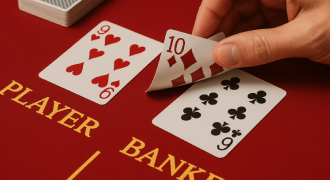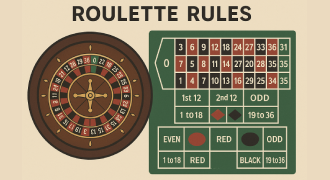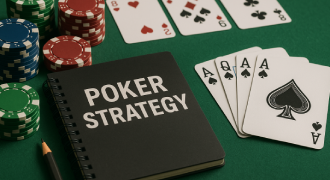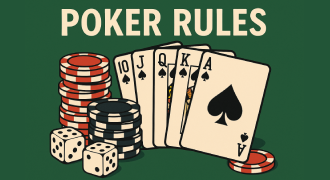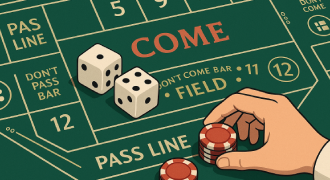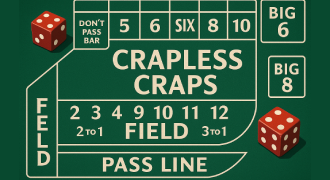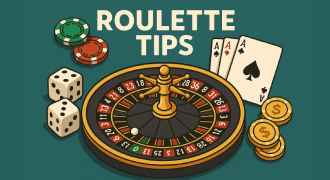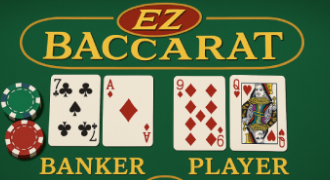Double Deck Blackjack – Faster Action with Great Odds
In a market obsessed with speed-to-value, Double Deck Blackjack delivers a crisp, low-latency path from decision to outcome. Two packs, lean shuffle cycles, and transparent deck rules create a clean read for disciplined players. You get sharper Double Deck Blackjack odds, tighter variance, and faster feedback loops per session. Whether you’re testing basic strategy or pushing advanced lines like card counting, this format rewards focus and operational clarity. It’s ideal for online play and real money pilots.
What Is Double Deck Blackjack All About?
Let’s define the value proposition clearly: two 52-card packs are shuffled and dealt with compact rotation, cutting noise and speeding each decision cycle. In practice, the format trims house edge versus bloated multi-deck pits, while preserving enough depth for a skilled read on game odds. If you’re asking what is Double Deck Blackjack, the short answer is a streamlined table with tighter deck rules that favor sharper risk control. Teams who operate in regulated markets also like the clean fit with online play and compliance workflows.
Rules Overview and Key Gameplay Elements
The table below functions as a quick Double Deck Blackjack chart for planning. Use it to lock in the must-know levers before you ramp. From these parameters you can model betting thresholds, simulate variance, and align your basic strategy. Always document exceptions to deck rules because one toggle can shift expected value.
|
Element |
Common Double-Deck Setting |
Operational Notes |
|
Decks In Use |
2 standard decks |
Fewer cards improve clarity for basic strategy reads. |
|
Dealer Action |
Stands or hits on Soft 17 (site-specific) |
Confirm table signage; S17 marginally improves player EV. |
|
Doubling |
Typically on any two cards; often after split |
Enables aggressive lines when EV positive. |
|
Splitting |
Usually split up to 3–4 hands; Aces often once |
Manage exposure; watch re-split rules. |
|
Blackjack Pay |
Commonly 3:2 |
Validate payout before buy-in to protect ROI. |
|
Peek Rule |
Dealer peeks for Ace/10 in many venues |
Reduces waste on doomed splits/doubles. |
For completeness, align your risk controls with the rule set:
- Bankroll units: 1–2% of total stake per hand.
- Stop-loss triggers: 50–100 units depending on volatility.
- Session caps: pre-set duration to prevent fatigue-driven errors.
- Data capture: hand outcomes, decisions, and dealer up-cards for post-mortem.
Double Deck vs Single Deck – Which Is Better?
Here’s the executive summary: single-deck formats can post the lowest theoretical house edge with perfect play, but table restrictions and shuffle frequency often erode that edge in the real world. Two-deck games create a pragmatic balance of speed, transparency, and scalable seat availability. If you’re wondering is Double Deck Blackjack better, consider throughput, seat supply, and policy risk: two decks usually deliver steadier game odds under typical casino conditions. To visualize the trade-offs, review the matrix below and align it with your targets.
|
Format |
Typical House Edge* |
Counting Signal |
Shuffle Drag |
Table Availability |
|
Single Deck |
Lowest in theory |
Strongest |
Highest |
Limited |
|
Double Deck |
Low and stable |
Strong |
Moderate |
Broad |
|
Six+ Decks |
Higher |
Weaker |
Lower |
Widest |
*Actual values depend on table policies; verify before buy-in.
How to Play Double Deck Blackjack Online
Spin up a session via a licensed operator, confirm table specs, and calibrate your bankroll to volatility. For risk governance, pre-define loss caps, profit targets, and stop-loss triggers. Then switch to execution mode: read the up-card, apply your Double Deck Blackjack strategy, and track outcomes. Modern lobbies support online play with audit trails, making post-session analysis straightforward. Maintain a lightweight run-book so anyone on the team can replicate the sequence: table selection, verification, and record-keeping.
- Step 1: Choose Your Wager and Join the Table
Start with a bankroll allocation sized for at least 50–100 hands at your target unit. Lock a minimum and maximum stake that keeps variance within your tolerance window. Select a table that pays 3:2 and verify whether the dealer stands on Soft 17. Before the first deal, map key constraints into your plan: table limits, penetration, and payout policies.
- Step 2: Two Cards Dealt to You and the Dealer
You receive two Double Deck Blackjack cards face up; the dealer shows one up-card and one hole card in most online venues. Immediately classify the hand: hard total, soft total, or a potential split. Anchor your decision to a prebuilt strategy chart so you don’t improvise under pressure. Track the composition when practical; even light card counting cues can refine tough borderline calls.
- Step 3: Hit, Stand, Split or Double – Your Call
Execute the action with intent: hit to improve weak totals, stand when the dealer’s bust rate is favorable, split only when the EV bump is proven, and double when the math supports leverage. Document deviations from basic strategy and note why you overrode the model. This is where process discipline compounds—consistent choices reduce tilt and protect capital. If you deploy bet ramps, make them incremental and rules-aware so exposure stays within risk appetite.
- Step 4: Dealer Draws and Round Ends
After your decisions lock, the dealer completes the hand per house policy. Results settle instantly; capture them in your tracker to monitor streaks and variance. Use the feedback loop to recalibrate wager sizing, especially after prolonged downswings. Close the round, reset, and prepare for the next hand with the same operational cadence.
Quick Double Deck Blackjack Decision Checklist
- Identify hand type (hard/soft/pair) before referencing any chart.
- Compare your total against the dealer up-card; prioritize EV over gut feel.
- Confirm table policy toggles that affect edge (S17/H17, DAS, RSA).
- Apply bet sizing rules only after verified advantage; avoid impulse ramps.
- Log the rationale for every deviation so you can audit later.
|
Trigger |
Recommended Action |
|
Bankroll down 50 units |
Pause session; reassess variance and limits |
|
Dealer shows Ace with peek |
Delay splits/doubles until outcome confirmed |
|
Fatigue or distraction |
End session; protect decision quality |
Tips and strategies for single deck Blackjack
Single-deck tables reward precision but punish sloppiness. Favor 3:2 games, avoid 6:5 payouts, and confirm whether doubling after split is allowed. Keep your decision tree tight: fewer cards mean each misplay exacts a bigger tax on ROI. If counting, scale bets modestly; heat arrives faster at one-deck tables, so protect longevity. Finally, cache a compact decision map on a mobile note to keep lookups snappy without slowing the Double Deck Blackjack table.
- Prioritize S17 over H17 when options exist.
- Avoid side bets that increase volatility without EV.
- Track penetration; frequent shuffles dilute any edge.
- Use a printed or digital chart for fast lookups.
- Keep sessions short to reduce cognitive drift.
For real money or for free
Sandbox first: test flows in demo mode to validate mechanics and your baseline timing. When you pivot to real money, set explicit entry and exit criteria to keep governance clean. Operators now offer real money Double Deck Blackjack across regulated markets, verify KYC and payout speed. Whether free-to-play or cash sessions, define objectives—practice reps, edge testing, or entertainment—and measure outcomes. Document deposits, withdrawals, and session notes so reconciliation stays audit-ready.
Final thoughts on single-deck Blackjack
Single-deck remains a high-signal environment for purists who prize tight control and surgical moves. Yet the operational overhead—limited seats, shuffle drag, and stricter surveillance—often caps throughput. Double-deck formats strike a better balance for most players who want speed and stable policy.
Pick the ecosystem that aligns with your goals, then execute with discipline and documented process. Across both formats, the governance principle is the same: plan the work, work the plan, and log the outcomes. Whether you operate in a pit or via online Double Deck Blackjack play, keep card counting discrete and policy-aware to sustain access.
FAQ
Are double-deck odds better than six-deck games?
Yes, all else equal the house edge is typically lower with two decks; verify table policies to quantify exact odds Double Deck Blackjack.
Should I tweak my usual strategy here?
Yes. Use a dedicated strategy Double Deck Blackjack and update plays where two-deck rules diverge from multi-deck models.
How effective is card counting in this format?
Two decks improve signal quality; run Double Deck Blackjack card counting with small spreads and strict risk controls.
Can I play live dealer double-deck Blackjack?
Yes. Most major lobbies provide live tables under standard compliance, enabling seamless online play.

